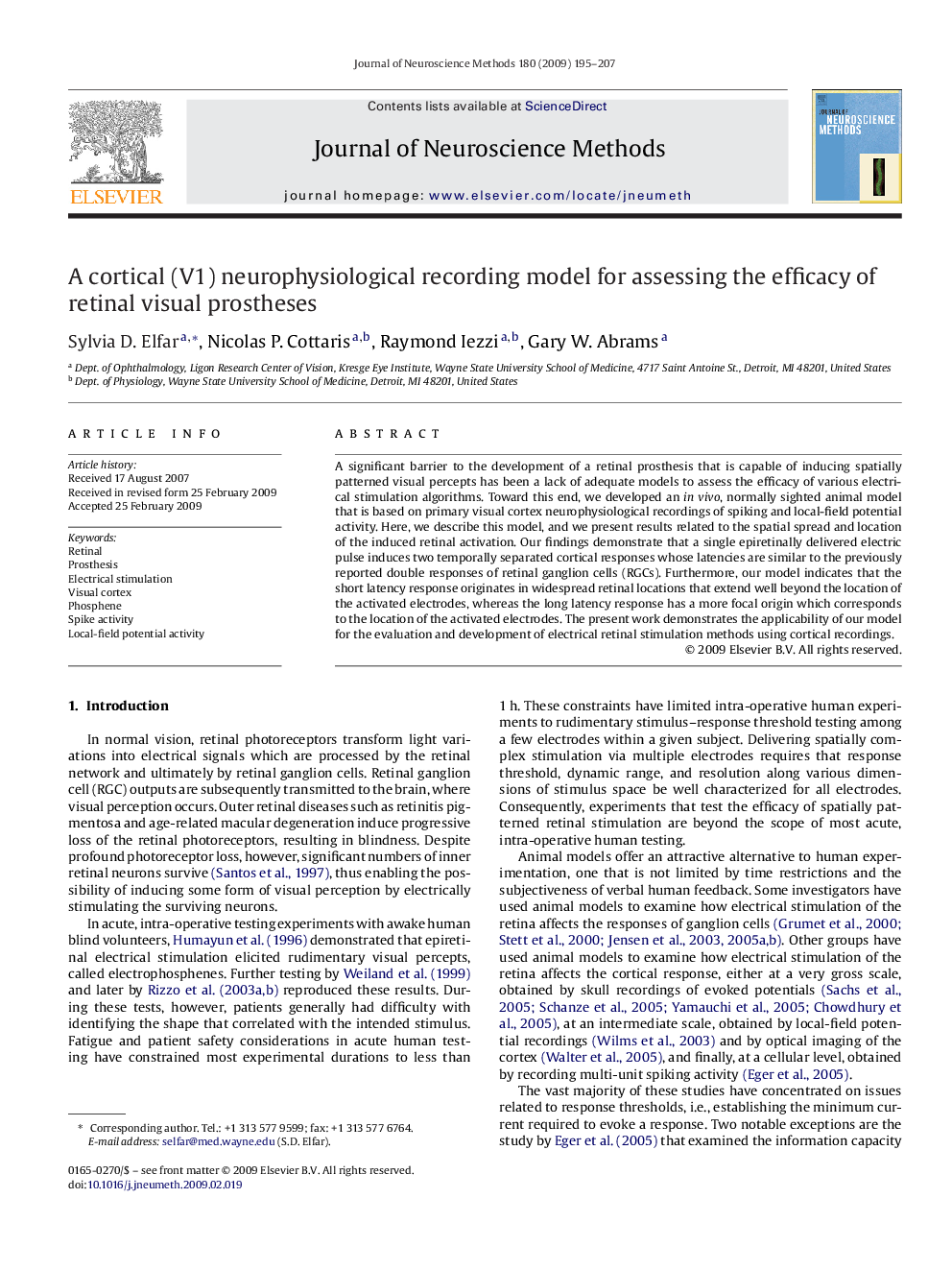| Article ID | Journal | Published Year | Pages | File Type |
|---|---|---|---|---|
| 4336002 | Journal of Neuroscience Methods | 2009 | 13 Pages |
Abstract
A significant barrier to the development of a retinal prosthesis that is capable of inducing spatially patterned visual percepts has been a lack of adequate models to assess the efficacy of various electrical stimulation algorithms. Toward this end, we developed an in vivo, normally sighted animal model that is based on primary visual cortex neurophysiological recordings of spiking and local-field potential activity. Here, we describe this model, and we present results related to the spatial spread and location of the induced retinal activation. Our findings demonstrate that a single epiretinally delivered electric pulse induces two temporally separated cortical responses whose latencies are similar to the previously reported double responses of retinal ganglion cells (RGCs). Furthermore, our model indicates that the short latency response originates in widespread retinal locations that extend well beyond the location of the activated electrodes, whereas the long latency response has a more focal origin which corresponds to the location of the activated electrodes. The present work demonstrates the applicability of our model for the evaluation and development of electrical retinal stimulation methods using cortical recordings.
Related Topics
Life Sciences
Neuroscience
Neuroscience (General)
Authors
Sylvia D. Elfar, Nicolas P. Cottaris, Raymond Iezzi, Gary W. Abrams,
